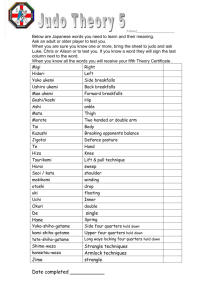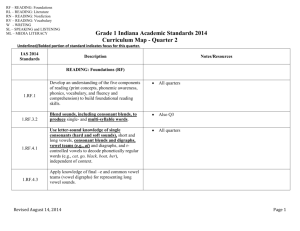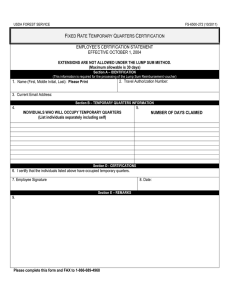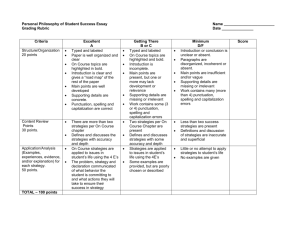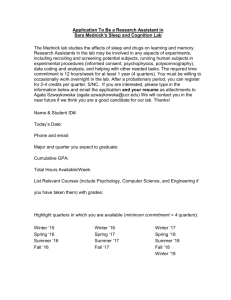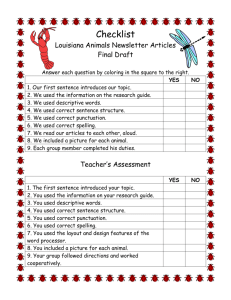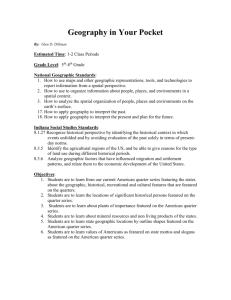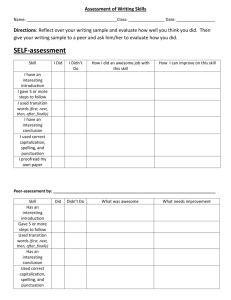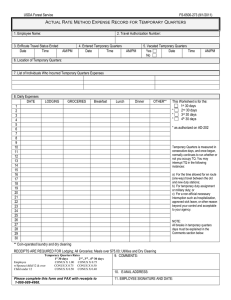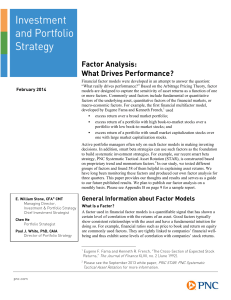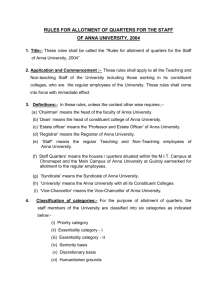3rd Grade Common Core Plan
advertisement
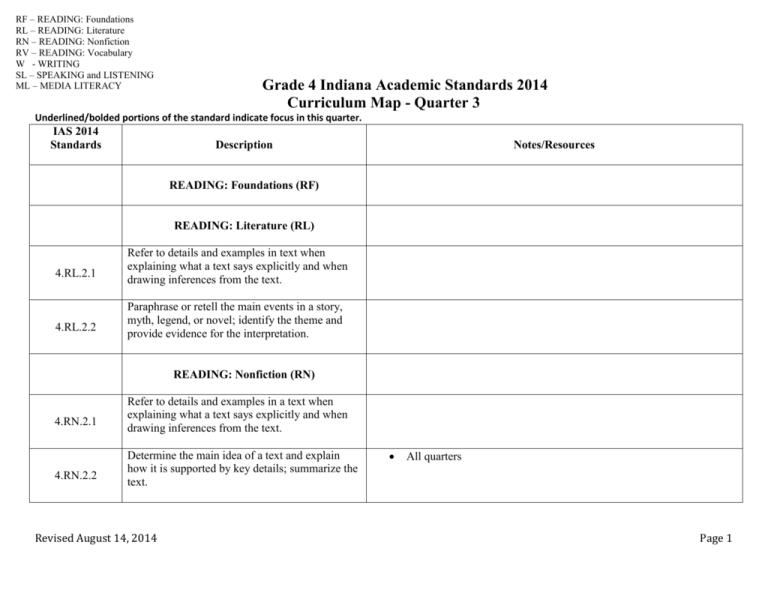
RF – READING: Foundations RL – READING: Literature RN – READING: Nonfiction RV – READING: Vocabulary W - WRITING SL – SPEAKING and LISTENING ML – MEDIA LITERACY Grade 4 Indiana Academic Standards 2014 Curriculum Map - Quarter 3 Underlined/bolded portions of the standard indicate focus in this quarter. IAS 2014 Standards Description Notes/Resources READING: Foundations (RF) READING: Literature (RL) 4.RL.2.1 4.RL.2.2 Refer to details and examples in text when explaining what a text says explicitly and when drawing inferences from the text. Paraphrase or retell the main events in a story, myth, legend, or novel; identify the theme and provide evidence for the interpretation. READING: Nonfiction (RN) 4.RN.2.1 4.RN.2.2 Refer to details and examples in a text when explaining what a text says explicitly and when drawing inferences from the text. Determine the main idea of a text and explain how it is supported by key details; summarize the text. Revised August 14, 2014 All quarters Page 1 READING: Vocabulary (RV) 4.RV.1 4.RV.2.1 4.RV.2.4 4.RV.3.3 4.RV.3.5 Build and use accurately general academic and content-specific words and phrases. All quarters All quarters All quarters Apply context clues (e.g., word, phrase, sentence, and paragraph clues) and text features (e.g., charts, headings/subheadings, font/format) to determine the meanings of unknown words. Apply knowledge of word structure elements (e.g., suffixes, prefixes, common Greek and Latin affixes and roots), known words, and word patterns to determine meaning. Compare and contrast a firsthand and secondhand account of the same event or topic; describe the differences in focus and the information provided in the accounts. Consult reference materials, both print and digital (e.g., dictionary), to find the pronunciation and clarify the precise meanings of words and phrases. WRITING (W) 4.W.1 4.W.2.1 Write routinely over a variety of time frames and for a range of discipline-specific tasks, purposes, and audiences; apply reading standards to support reflection and response to literature and nonfiction texts. Write legibly in print or cursive, forming letters and words that can be read by others. Revised August 14, 2014 Page 2 4.W.3.1 4.W.4 4.W.6.1 4.W.6.1a 4.W.6.1c Write persuasive compositions in a variety of forms that In an introductory statement, clearly state an opinion to a particular audience. Support the opinion with facts and details from various sources, including texts. Use an organizational structure to group related ideas that support the purpose. Connect opinion and reasons using words and phrases. Provide a concluding statement or section related to the position presented. Apply the writing process to Generate a draft by developing and selecting and organizing ideas relevant to topic, purpose, and genre; revise to improve writing, using appropriate reference materials (e.g., quality of ideas, organization, sentence fluency, word choice); edit writing for format and conventions (e.g., spelling, capitalization, usage, punctuation). Use technology to interact and collaborate with others to publish legible documents. All quarters Demonstrate command of English grammar and usage, focusing on: Also Q1 Nouns/Pronouns – Writing sentences that include relative pronouns (e.g., who, which) and reflexive pronouns (e.g., myself, ourselves) and explaining their functions in the sentence. Adjectives/Adverbs – Writing sentences using relative adverbs (e.g., where, when) and explaining their functions in the sentence. Revised August 14, 2014 Page 3 4.W.6.1d 4.W.6.2 4.W.6.2a 4.W.6.2b 4.W.6.2.c Prepositions – Writing sentences that include prepositions, explaining their functions in the sentence. Demonstrate command of capitalization, punctuation, and spelling, focusing on: Capitalization – Capitalizing names of magazines, newspapers, works of art, musical compositions, organizations, and the first word in quotations, when appropriate. Punctuation – Correctly using apostrophes to form possessives and contractions. Correctly using quotation marks and commas to mark direct speech. Using a comma before a coordinating conjunction in a compound sentence. Spelling – Using spelling patterns and generalizations (e.g., word families, positionbased spellings, syllable patterns, ending rules, meaningful word parts, homophones/homographs) in writing single and multi-syllable words. All quarters All quarters All quarters All quarters SPEAKING and LISTENING (SL) 4.SL.3.2 Identify and use evidence a speaker provides to support particular points. Revised August 14, 2014 Page 4 MEDIA LITERACY (ML) 4.ML.1 4.ML.2.1 Identify how information found in electronic, print, and mass media is used to inform, persuade, entertain, and transmit culture. Also Q2, Q4 Recognize claims in print, image, and multimedia and identify evidence used to support these claims. Revised August 14, 2014 Page 5
